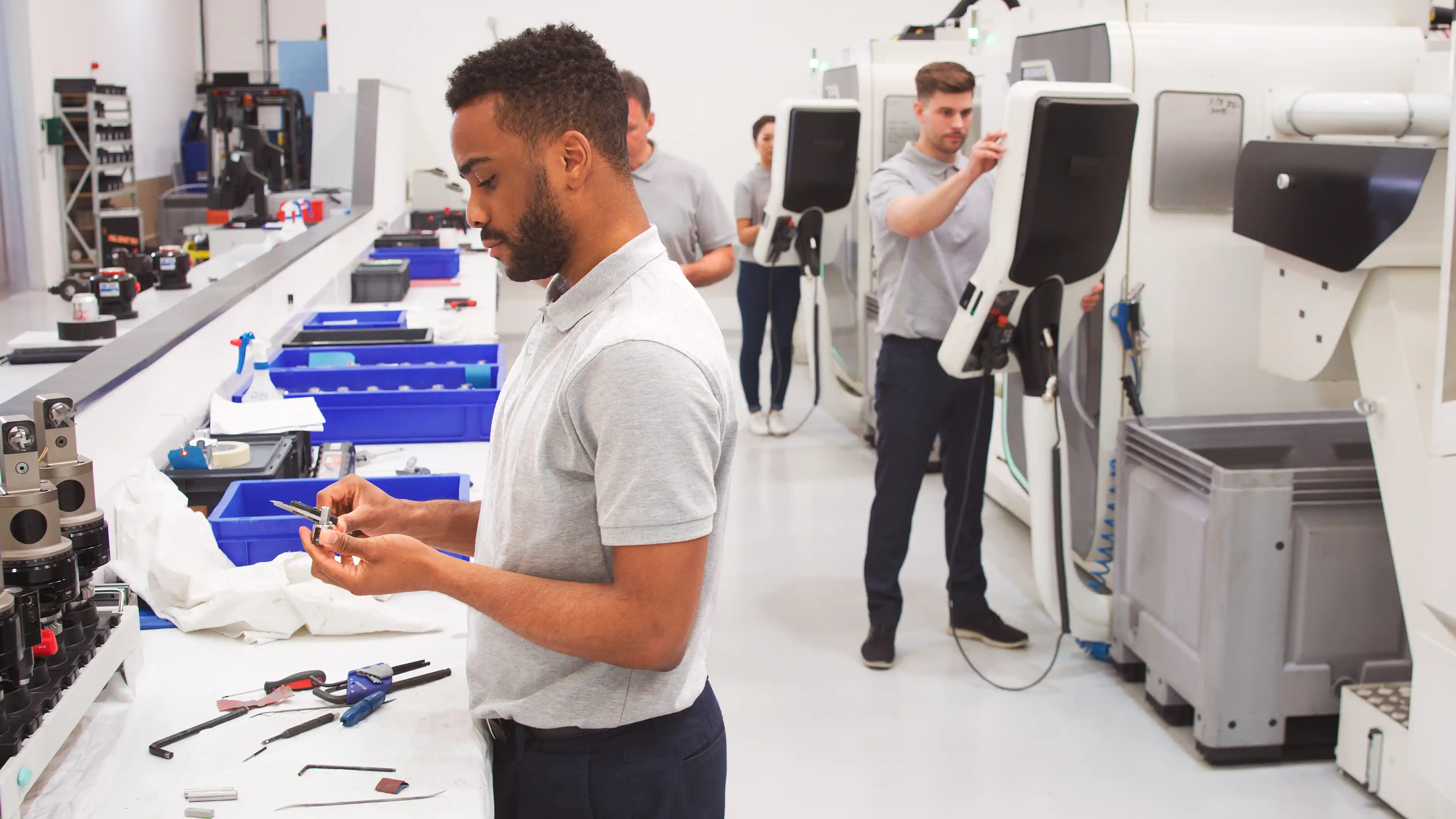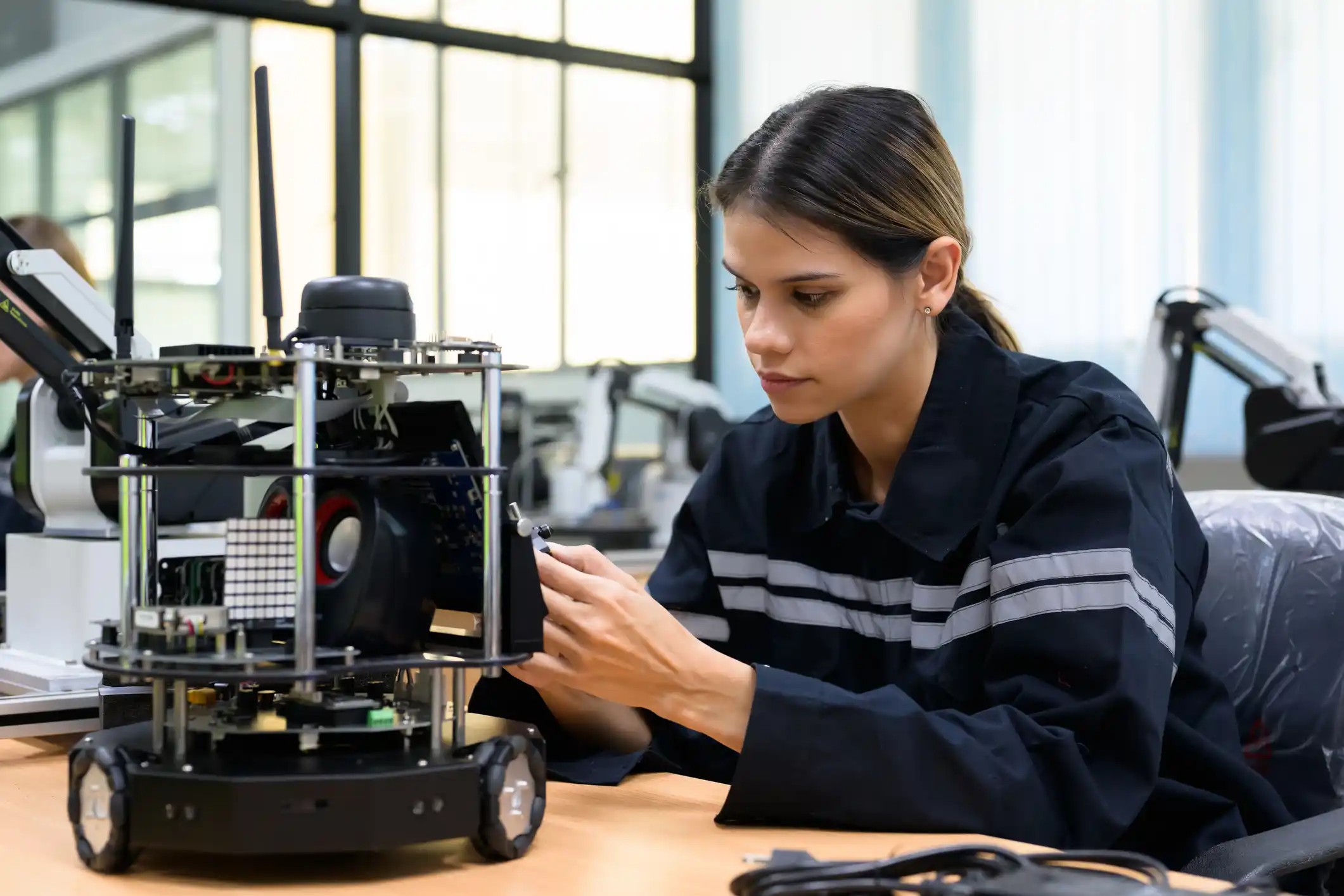
Bridging the dream gap: Tackling gender disparity in STEM through education, role models, and mentorship
Date
09/10/2024
Category
Insights
Enginuity's Sector Engagement Lead, Tabby Hanlon Scott, shares her thoughts
The gender disparity in STEM (Science, Technology, Engineering and Maths) remains a pressing issue in the UK, with women significantly underrepresented. Currently, only 26% of the UK’s STEM workforce is female, and despite various initiatives, the ‘dream gap’, where young girls’ ambition and potential are hindered by the society they are brought up in, is still very real.
The ‘dream gap’ emerges early, with girls as young as six beginning to lose confidence in their ability to succeed in traditionally male-dominated fields like engineering and manufacturing, and other STEM sectors. Our society and outdated stereotypes often discourage girls from pursuing STEM subjects, leading to a significant drop in engagement as they progress through school. Addressing the gap is crucial not only for empowering young women, but also for ensuring the UK can meet the growing need for skilled STEM professionals.
Closing the ‘dream gap’ requires a mix of solutions, like early education initiatives, strong visible role models, and mentorship, to inspire and support more girls in pursuing and thriving in STEM careers.
Early exposure to STEM
Engaging schools, colleges, and community groups in providing quality career advice and guidance is crucial to closing the ‘dream gap’ for girls in STEM. Early, consistent exposure to STEM subjects and careers significantly increases the likelihood that young people, especially girls, will pursue STEM pathways.
Research from EngineeringUK highlights the importance of starting the influence in primary school, as gender stereotypes begin to steer girls away from STEM as early as age six.1 However, students who attend STEM careers activities are 3.5 times more likely to understand what engineers do, and 3.4 times more likely to consider a career in the sector. 2 This demonstrates just how important early engagement is in shaping girls’ perceptions of STEM, raising aspirations, and encouraging them to see STEM as a viable and achievable career path.
The power of representation in STEM
One of the most effective ways to bridge the gender gap in STEM is through the influence of relatable, female role models. Research indicates that girls are 33% more likely to consider STEM careers if they know or see a woman in the field, which is critical for addressing the ‘dream gap’. When girls don’t, or can’t, see women succeeding in these fields, it becomes harder for them to envision themselves pursuing similar careers.
This lack of representation reinforces outdated, harmful stereotypes, making STEM careers feel out of reach. Role models show girls that STEM is a place for them; they help to demystify STEM career paths, offer practical guidance, and share personal experiences that make these fields feel more accessible and inclusive.
Mentoring young women to succeed in STEM
Mentors play a significant role in addressing the ‘dream gap’ in STEM by providing guidance, support, and encouragement to young women and girls, helping them navigate challenges, defy expectations, and build confidence in their abilities. By fostering a supportive relationship, whether within a workplace or through other support networks, mentors can help girls identify their strengths and develop the skills necessary for success in STEM, and other male-dominated industries. Effective mentorship not only empowers young women and girls, but inspires them to envision themselves in successful STEM careers, which is imperative for overcoming the ‘dream gap’.
The growing demand for STEM professionals in the UK makes it critical to address the gender imbalance and to encourage more women and girls to choose STEM careers. Through early engagement and tackling stereotypes, providing female role models, and offering mentorships, the ‘dream gap’ can be closed, and more women and girls can be supported and encouraged to embark on exciting careers in STEM.
Tabby Hanlon-Scott
Sector Engagement Lead at Enginuity
Connect with Tabby on LinkedIn
1 Interventions to increase girls’ aspirations for engineering and technology careers – EngineeringUK
2 Interventions to increase girls’ aspirations for engineering and technology careers – EngineeringUK
More news



